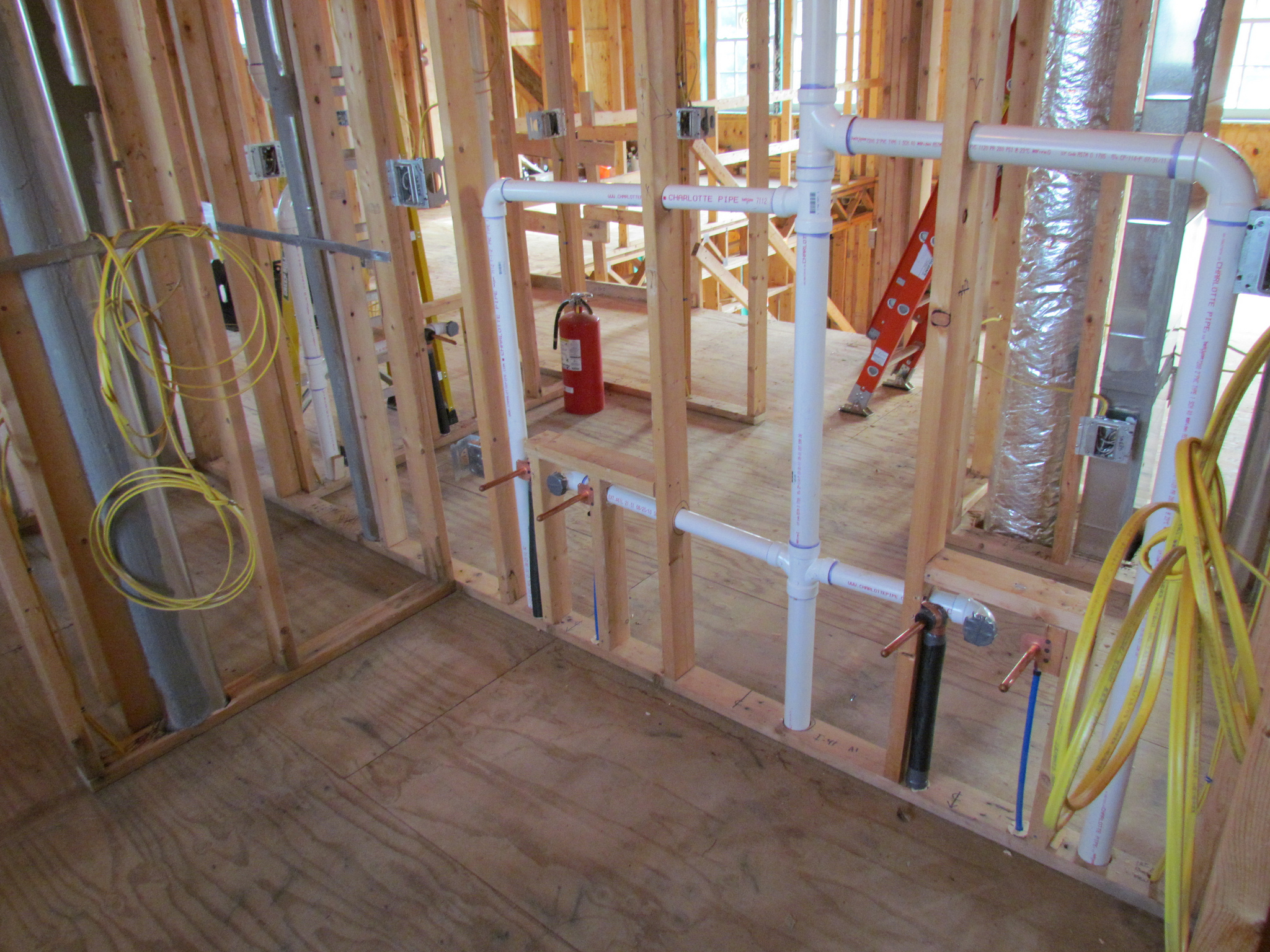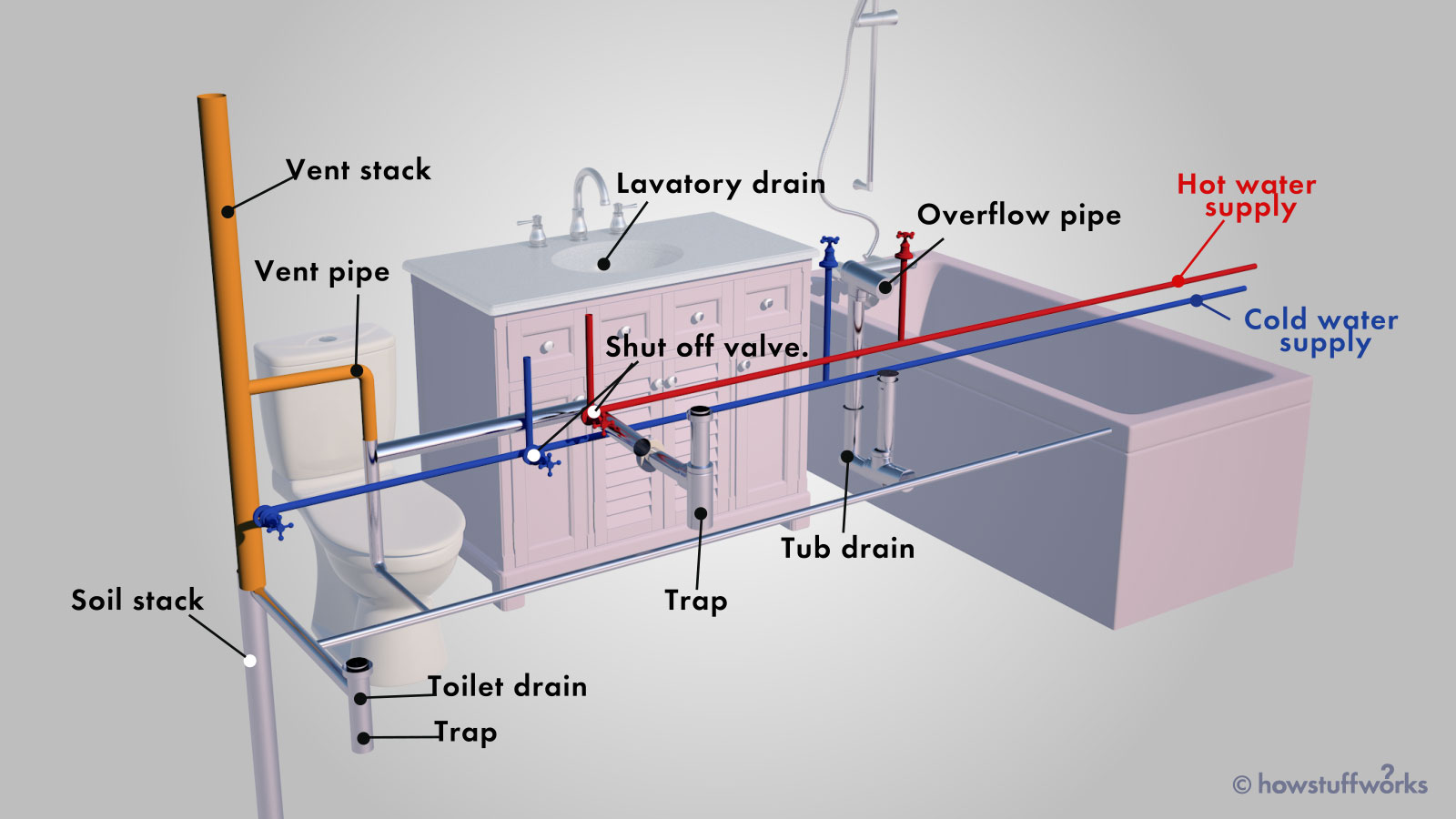In this article in the next paragraphs yow will discover more exceptional content on the subject of The Inner Workings of Your Home's Plumbing.

Understanding just how your home's plumbing system works is vital for each house owner. From providing tidy water for alcohol consumption, cooking, and showering to safely eliminating wastewater, a well-maintained pipes system is critical for your family members's wellness and convenience. In this comprehensive overview, we'll discover the complex network that composes your home's pipes and deal pointers on maintenance, upgrades, and handling usual problems.
Introduction
Your home's pipes system is greater than just a network of pipelines; it's a complicated system that ensures you have accessibility to clean water and reliable wastewater elimination. Understanding its parts and exactly how they interact can assist you avoid expensive repair work and ensure every little thing runs efficiently.
Basic Elements of a Plumbing System
Pipelines and Tubes
At the heart of your pipes system are the pipes and tubing that lug water throughout your home. These can be made of numerous materials such as copper, PVC, or PEX, each with its benefits in regards to longevity and cost-effectiveness.
Components: Sinks, Toilets, Showers, etc.
Fixtures like sinks, toilets, showers, and bath tubs are where water is utilized in your house. Comprehending how these components link to the pipes system assists in identifying problems and intending upgrades.
Shutoffs and Shut-off Factors
Shutoffs control the circulation of water in your plumbing system. Shut-off valves are vital during emergencies or when you need to make repair services, permitting you to separate parts of the system without interrupting water flow to the whole house.
Water System System
Key Water Line
The primary water line connects your home to the municipal supply of water or a private well. It's where water enters your home and is dispersed to numerous components.
Water Meter and Pressure Regulatory Authority
The water meter measures your water usage, while a stress regulatory authority ensures that water streams at a risk-free stress throughout your home's plumbing system, protecting against damages to pipes and components.
Cold Water vs. Hot Water Lines
Recognizing the distinction between cold water lines, which provide water straight from the primary, and warm water lines, which carry warmed water from the hot water heater, helps in repairing and planning for upgrades.
Drainage System
Drain Pipes Piping and Traps
Drain pipes bring wastewater far from sinks, showers, and toilets to the sewage system or septic tank. Catches protect against sewer gases from entering your home and also catch particles that can create obstructions.
Air flow Pipelines
Air flow pipelines allow air into the drainage system, avoiding suction that might reduce drainage and create catches to vacant. Correct air flow is essential for keeping the stability of your plumbing system.
Importance of Correct Water Drainage
Making certain correct water drainage protects against back-ups and water damage. Frequently cleansing drains and keeping traps can avoid pricey repair work and extend the life of your plumbing system.
Water Heating Unit
Sorts Of Water Heaters
Hot water heater can be tankless or conventional tank-style. Tankless heating systems heat water on demand, while storage tanks store heated water for prompt usage.
How Water Heaters Link to the Plumbing System
Understanding how hot water heater link to both the cold water supply and hot water circulation lines assists in detecting problems like inadequate hot water or leakages.
Maintenance Tips for Water Heaters
Routinely flushing your water heater to eliminate debris, checking the temperature setups, and evaluating for leaks can prolong its life expectancy and boost power performance.
Typical Plumbing Problems
Leaks and Their Causes
Leakages can take place as a result of maturing pipelines, loosened fittings, or high water pressure. Dealing with leaks quickly prevents water damages and mold and mildew development.
Clogs and Blockages
Obstructions in drains and bathrooms are typically triggered by flushing non-flushable products or an accumulation of grease and hair. Making use of drain screens and being mindful of what drops your drains pipes can stop clogs.
Indications of Plumbing Problems to Watch For
Low water stress, slow-moving drains, foul odors, or uncommonly high water expenses are indicators of possible plumbing troubles that ought to be dealt with immediately.
Pipes Upkeep Tips
Routine Examinations and Checks
Arrange yearly pipes inspections to catch issues early. Try to find indications of leakages, rust, or mineral accumulation in faucets and showerheads.
DIY Maintenance Tasks
Simple jobs like cleaning faucet aerators, looking for bathroom leaks making use of dye tablets, or protecting subjected pipes in cool environments can prevent major pipes problems.
When to Call a Specialist Plumbing Technician
Know when a pipes problem needs professional knowledge. Trying complicated fixings without proper knowledge can cause more damages and greater repair service costs.
Upgrading Your Plumbing System
Factors for Updating
Updating to water-efficient components or changing old pipelines can enhance water high quality, minimize water bills, and increase the value of your home.
Modern Pipes Technologies and Their Benefits
Check out innovations like clever leakage detectors, water-saving toilets, and energy-efficient water heaters that can conserve money and decrease ecological impact.
Expense Considerations and ROI
Determine the upfront expenses versus long-term savings when taking into consideration plumbing upgrades. Numerous upgrades spend for themselves via decreased utility bills and less repair work.
Ecological Influence and Conservation
Water-Saving Components and Home Appliances
Mounting low-flow faucets, showerheads, and toilets can considerably lower water use without sacrificing performance.
Tips for Minimizing Water Usage
Easy practices like dealing with leakages immediately, taking much shorter showers, and running complete tons of washing and dishes can conserve water and lower your energy costs.
Eco-Friendly Pipes Options
Consider sustainable plumbing materials like bamboo for flooring, which is durable and eco-friendly, or recycled glass for kitchen counters.
Emergency situation Readiness
Actions to Take Throughout a Pipes Emergency
Know where your shut-off shutoffs are located and how to shut off the water supply in case of a ruptured pipeline or significant leak.
Value of Having Emergency Contacts Handy
Maintain contact details for neighborhood plumbers or emergency situation services easily available for quick feedback during a plumbing situation.
DIY Emergency Situation Fixes (When Appropriate).
Temporary solutions like utilizing air duct tape to patch a dripping pipeline or putting a container under a dripping tap can minimize damages until an expert plumber gets here.
Verdict.
Recognizing the composition of your home's pipes system encourages you to keep it efficiently, conserving money and time on fixings. By complying with normal maintenance regimens and remaining notified about contemporary pipes modern technologies, you can guarantee your pipes system operates effectively for several years to come.
HOW YOUR PLUMBING SYSTEM WORKS
Which Pipes Do What?
Blue lines = fresh water supply entering the building
Red lines = hot water supply entering the building
Grey lines = pipes carrying waste away from the building and venting pipes carrying gases away from the building (through the roof)
YOUR MAIN PLUMBING SYSTEMS
There are two main plumbing systems that support your home s basic plumbing needs one that brings clean water into your home, and one that sends dirty water away from your home. Connected to the toilet, bath, shower, and other faucets in your home, these two systems keep your water flowing in the right directions.
ACCESSING FRESH WATER
Fresh and clean water is brought into your home through the main water supply line . Filtered through one pipe, this water is pressured to flow into the various fixtures in your home at any given time.
This water can be sourced from a well located on your property, a pond or river (mostly cottages), or, as in most cases, from the city s municipal water treatment centre. However, it is important to note that water that is untreated, such as the water siphoned from ponds or rivers, may not be safe to drink. Personal water supplies always need to be treated for hardness and contaminants before consumed.
MUNICIPAL WATER SUPPLIES
Improve taste and odour
Remove sediment
Eliminate hardness
Reduce chlorine
COLD WATER SUPPLY VS. HOT WATER SUPPLY
Cold water flows into your home or building through the service line, which then distributes hot or cold water to your fixtures. This line is most commonly run through a central column that runs floor to floor. Hot water runs in short and straight pipes as the longer the pipeline, the more heat that will be lost in the transfer. Having shorter pipes also allows residents to access hot water more quickly.
WASTE WATER SYSTEM
Your wastewater system is divided into two parts pipes that send wastewater away from your home and venting pipes that send sewer gas away from your home. Sewage water travels through pipes that flush the water and waste towards local sewers that are operated and managed by your city or town. Most sewer systems rely on gravity to move the wastewater to where it needs to go.
The further away from your toilet or sink, the larger wastewater pipes become. This allows for waste to be disposed of from various parts of your home or business at once without pipe blockages. The angle and flow of these pipes are also essential for keeping your waste pipes clear of build up.
https://harrisplumbing.ca/how-your-home-plumbing-system-works/

HOW YOUR PLUMBING SYSTEM WORKS
Which Pipes Do What?
YOUR MAIN PLUMBING SYSTEMS
There are two main plumbing systems that support your home s basic plumbing needs one that brings clean water into your home, and one that sends dirty water away from your home. Connected to the toilet, bath, shower, and other faucets in your home, these two systems keep your water flowing in the right directions.
ACCESSING FRESH WATER
Fresh and clean water is brought into your home through the main water supply line . Filtered through one pipe, this water is pressured to flow into the various fixtures in your home at any given time.
This water can be sourced from a well located on your property, a pond or river (mostly cottages), or, as in most cases, from the city s municipal water treatment centre. However, it is important to note that water that is untreated, such as the water siphoned from ponds or rivers, may not be safe to drink. Personal water supplies always need to be treated for hardness and contaminants before consumed.
MUNICIPAL WATER SUPPLIES
COLD WATER SUPPLY VS. HOT WATER SUPPLY
Cold water flows into your home or building through the service line, which then distributes hot or cold water to your fixtures. This line is most commonly run through a central column that runs floor to floor. Hot water runs in short and straight pipes as the longer the pipeline, the more heat that will be lost in the transfer. Having shorter pipes also allows residents to access hot water more quickly.
WASTE WATER SYSTEM
Your wastewater system is divided into two parts pipes that send wastewater away from your home and venting pipes that send sewer gas away from your home. Sewage water travels through pipes that flush the water and waste towards local sewers that are operated and managed by your city or town. Most sewer systems rely on gravity to move the wastewater to where it needs to go.
The further away from your toilet or sink, the larger wastewater pipes become. This allows for waste to be disposed of from various parts of your home or business at once without pipe blockages. The angle and flow of these pipes are also essential for keeping your waste pipes clear of build up.
https://harrisplumbing.ca/how-your-home-plumbing-system-works/
As a person who reads on Plumbing Installation 101: All You Need to Know, I figured sharing that piece was important. Make sure you take a moment to distribute this write-up if you enjoyed reading it. Thanks for being here. Don't hesitate to visit our site back soon.
Book Your Installation